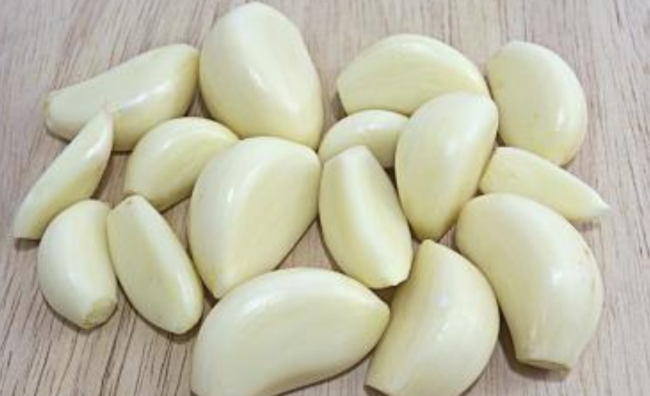A MALE SPLENDID FAIRY-WREN WEARING HIS FULL BREEDING PLUMAGE HAS ALL THE VISIBLE QUALITIES TO STAKE CLAIM TO THE TITLE OF THE MOST STUNNINGLY BEAUTIFUL OF ALL FAIRY-WRENS.
Shades of stunning fluorescent blues combine with black and white to make this a beautiful bird indeed.

Spread out across a wide range of southern mainland south Australia, predominantly inhabiting arid and semi-arid regions.

Like other wren species, Splendid Fairy-wrens are socially monogamous but sexually promiscuous, meaning that although males and females partner with one another they will quite happily mate with other individuals, then more often than not, remain to help raise the young.

As part of their courtship ritual, male wrens will often pluck pink of purple flower petals and display them to prospective mates.

While feeding Splendid Fairy-wrens usually forage on the ground eating small insects and spiders. They will sometimes supplement their diet with seeds, though ants become the last resort staple during wintertime.
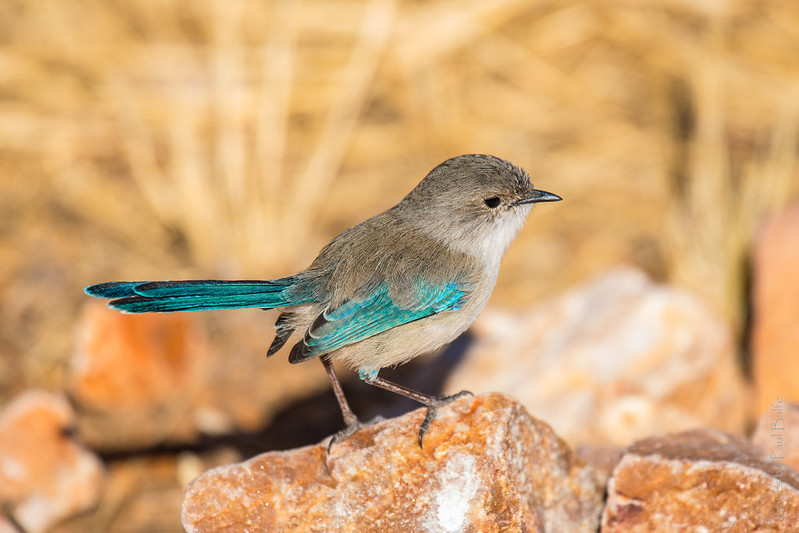
Unknown to most members of the public, there is an arms race between Splendid Fairy-wrens and brood parasite birds, (birds who lay their eggs in the nests of others, leaving them to race their chicks).
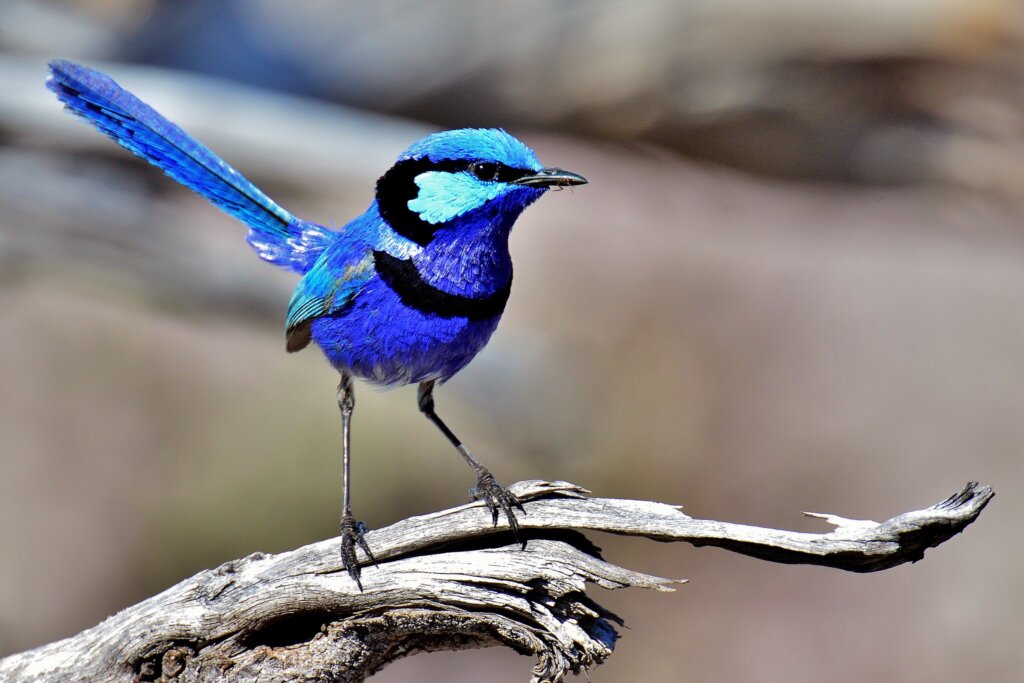
One fairy wren species has developed a remarkable way to fight back against unwanted and unwelcomed nestlings. Female Superb fairy wrens teach their embryos a secret password while they are still in their eggs.
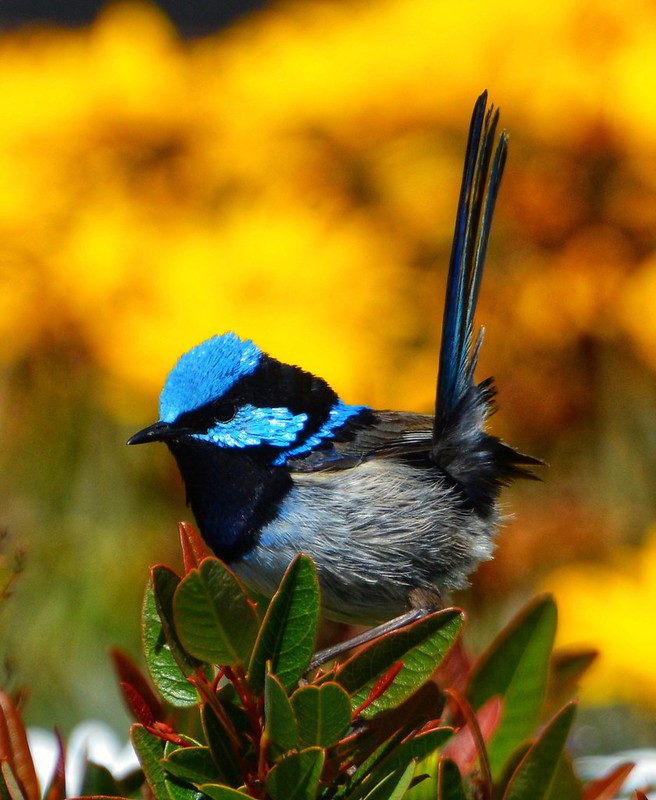
After they have hatched the fairy wren chicks incorporate this unique passwords into the calls when begging for food.
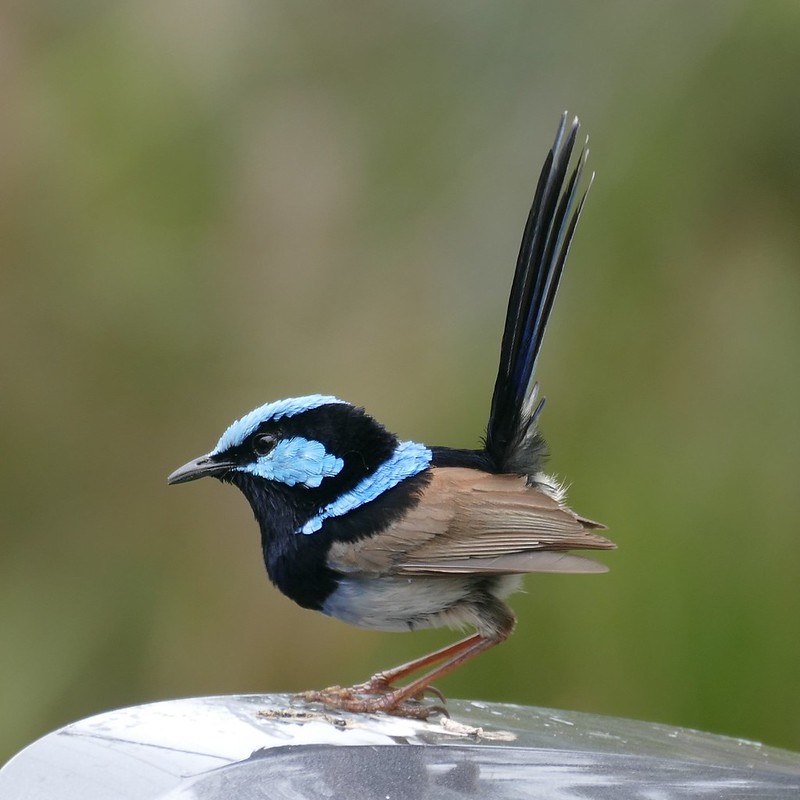
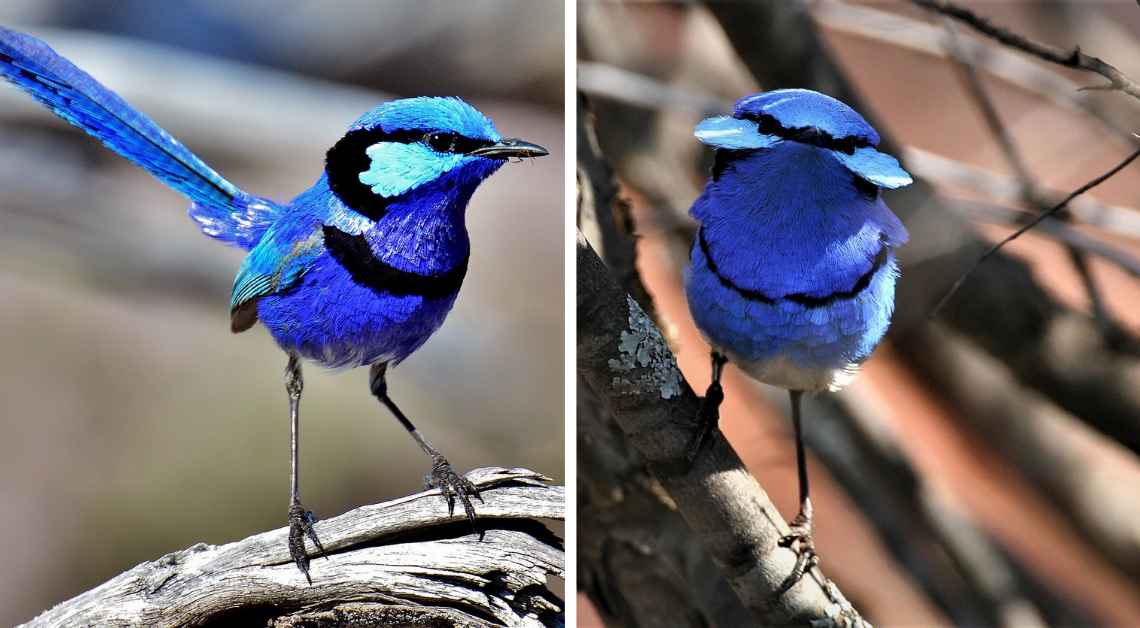

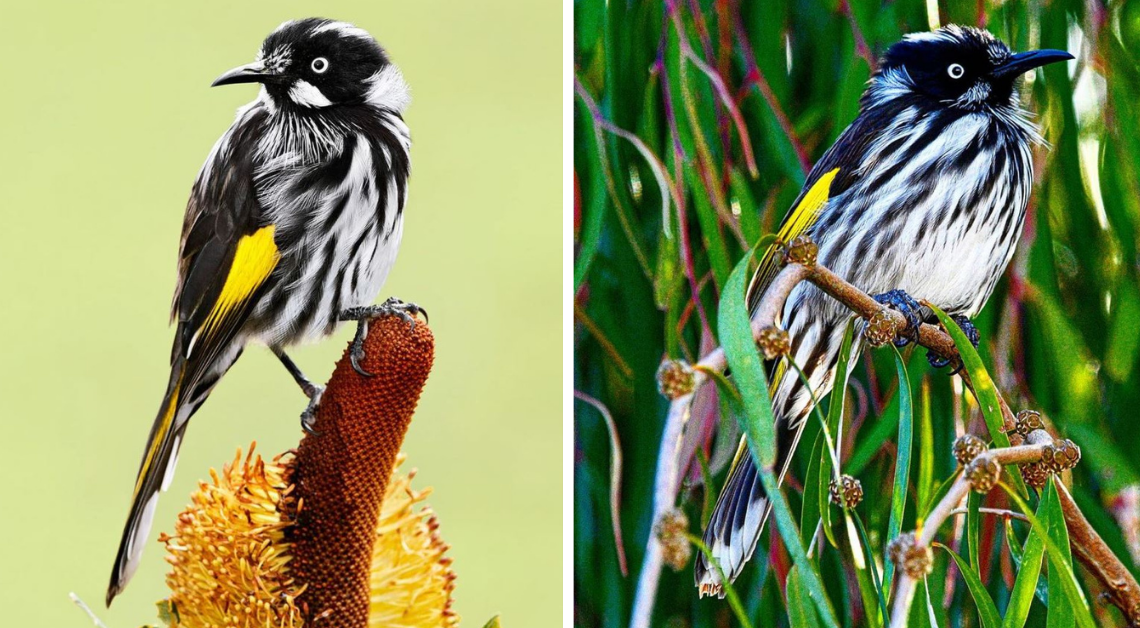
 The New Holland honeyeater (Phylidonyris novaehollandiae), is a honeyeater species found throughout southern Australia. A mainly black and white bird, with a large yellow wing patch, white facial tufts, and a matching white iris. There is also a small white ear patch and yellow margins in the tail.
The New Holland honeyeater (Phylidonyris novaehollandiae), is a honeyeater species found throughout southern Australia. A mainly black and white bird, with a large yellow wing patch, white facial tufts, and a matching white iris. There is also a small white ear patch and yellow margins in the tail. 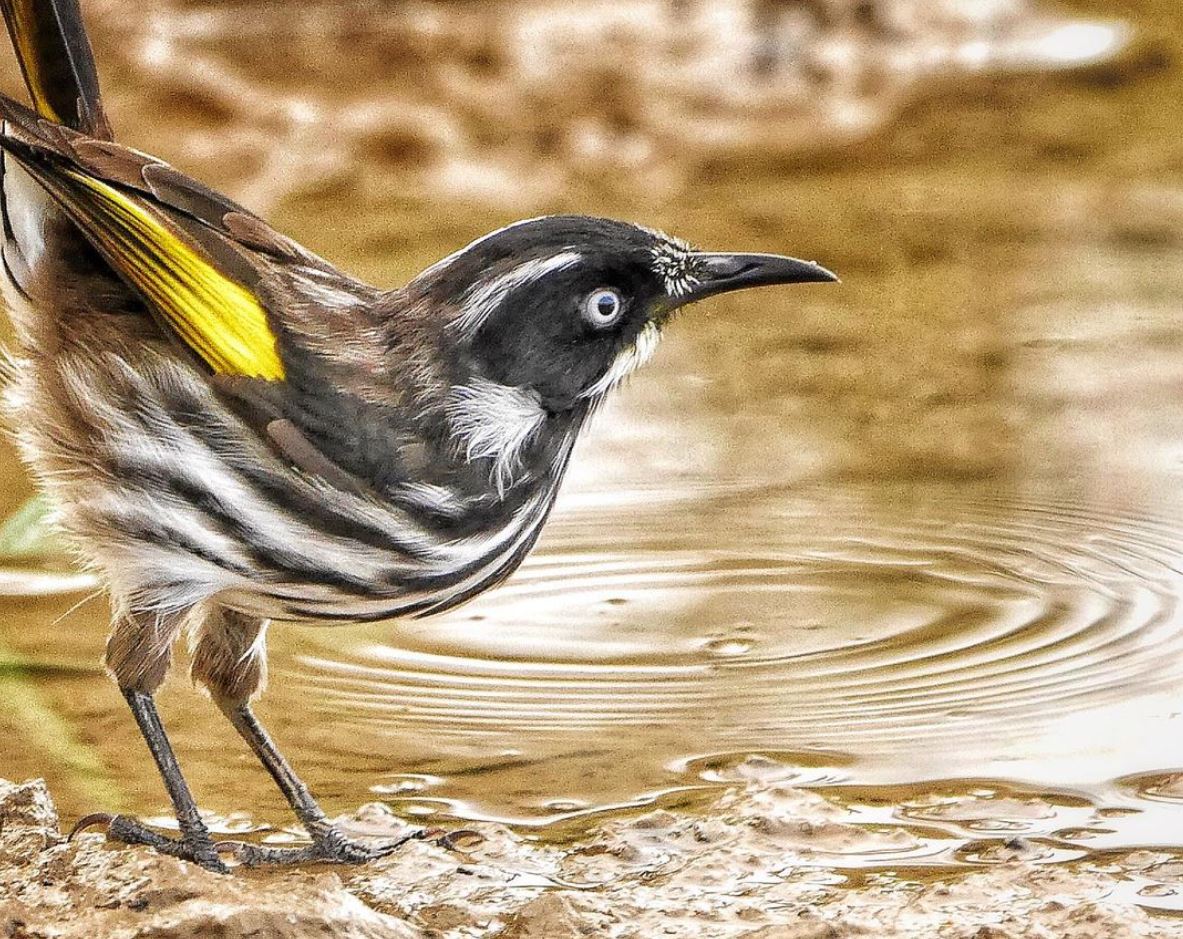 A highly active bird, the New Holland Honeyeater rarely sits still long enough for photo ops. The female is similar looking to the male, though slightly smaller.
A highly active bird, the New Holland Honeyeater rarely sits still long enough for photo ops. The female is similar looking to the male, though slightly smaller.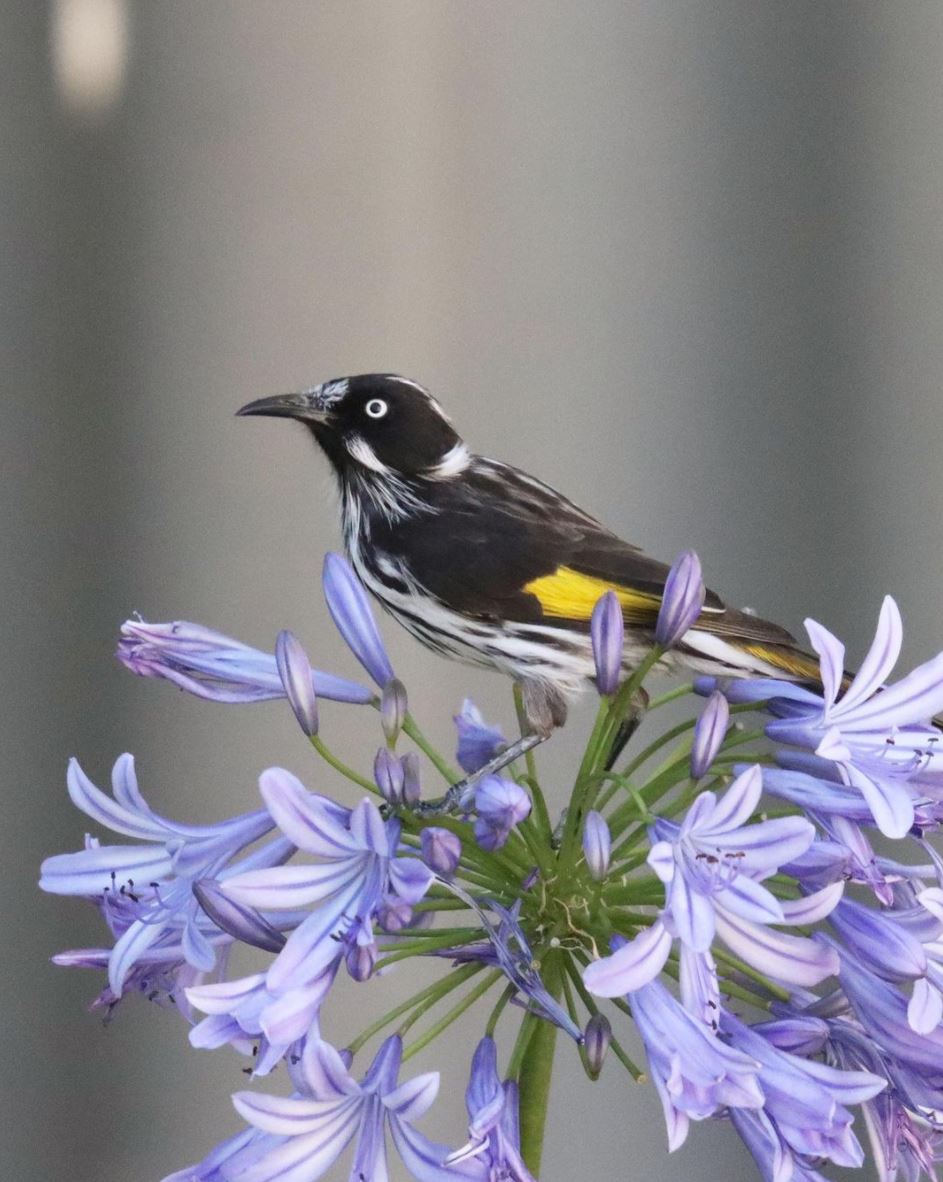 This species is found throughout southern Australia, including the island of Tasmania, Brisbane, and Queensland, to just north of Perth in Western Australia.
This species is found throughout southern Australia, including the island of Tasmania, Brisbane, and Queensland, to just north of Perth in Western Australia. These birds are mostly found in dry scrubby areas, but they will also frequent dry savannas, forests, grasslands, plantations, and gardens, especially where Grevillea and Banksia are found.
These birds are mostly found in dry scrubby areas, but they will also frequent dry savannas, forests, grasslands, plantations, and gardens, especially where Grevillea and Banksia are found. New Holland Honeyeaters actively feed on the nectar of flowers, darting from flower to flower in search of this high-energy food. Other sources of food include fruit, insects, and spiders.
New Holland Honeyeaters actively feed on the nectar of flowers, darting from flower to flower in search of this high-energy food. Other sources of food include fruit, insects, and spiders.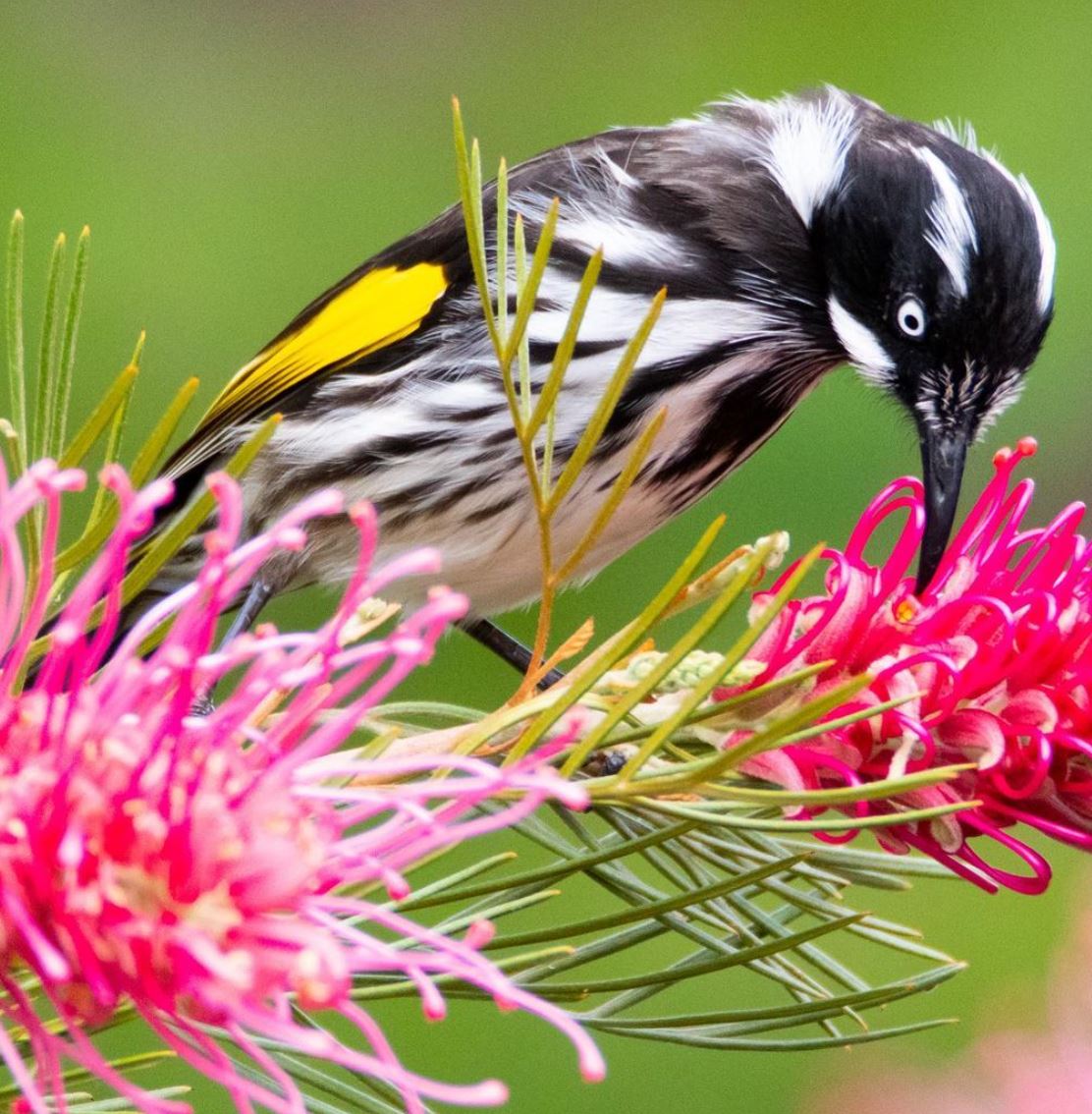
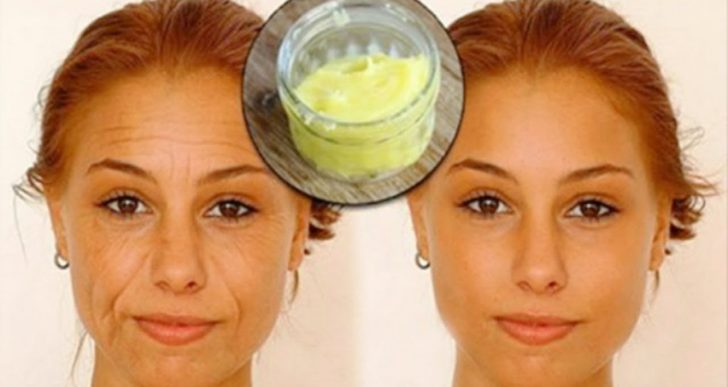


 The female tends to be more of an olive green shade with a black tail. She is easily recognizable with upper tail covers and rump being a bright scarlet.
The female tends to be more of an olive green shade with a black tail. She is easily recognizable with upper tail covers and rump being a bright scarlet. This bird can be found throughout many parts of Bangladesh, Bhutan, Brunei, Cambodia, China, India, Indonesia, Laos, Malaysia, Myanmar, Nepal, Singapore, Thailand, and Vietnam.
This bird can be found throughout many parts of Bangladesh, Bhutan, Brunei, Cambodia, China, India, Indonesia, Laos, Malaysia, Myanmar, Nepal, Singapore, Thailand, and Vietnam. This bird is found living at an altitude of 1000 m (3500 ft), mainly in tropical and or subtropical moist lowland forests, wooded areas, and gardens.
This bird is found living at an altitude of 1000 m (3500 ft), mainly in tropical and or subtropical moist lowland forests, wooded areas, and gardens. This bird is can quite often found in gardens with flowering and fruiting plants, especially mistletoe. Whether in forests or gardens mainly feeding on figs and fruit.
This bird is can quite often found in gardens with flowering and fruiting plants, especially mistletoe. Whether in forests or gardens mainly feeding on figs and fruit. During the breeding season, the Scarlet-backed flowerpecker weaves a pouch-shaped nest hanging from a high branch. The nest has a side entrance, which is something typical of the flowerpecker family as a whole.
During the breeding season, the Scarlet-backed flowerpecker weaves a pouch-shaped nest hanging from a high branch. The nest has a side entrance, which is something typical of the flowerpecker family as a whole.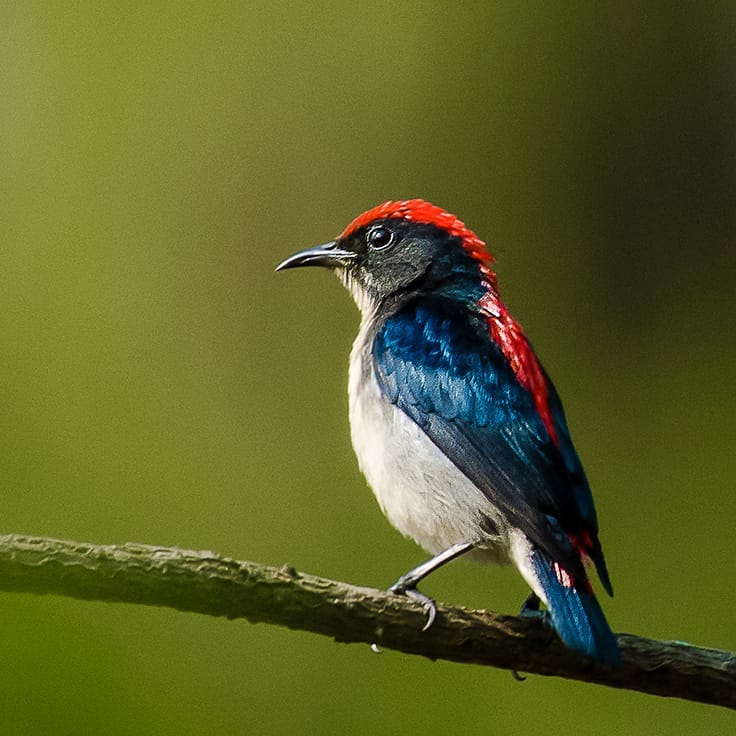 The population of this bird is thought to be in a stable condition with no evidence of any decline or immediate substantial threats.
The population of this bird is thought to be in a stable condition with no evidence of any decline or immediate substantial threats.
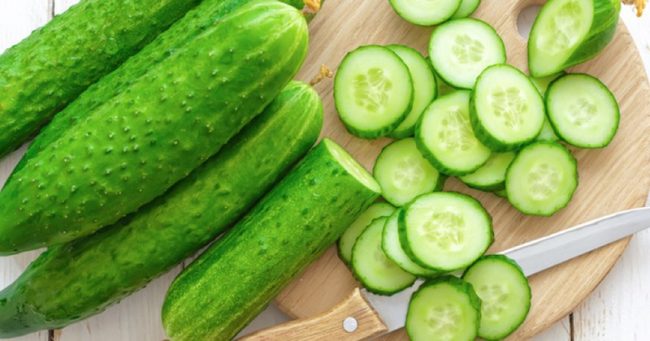

 The golden-browed chlorophonia (Chlorophonia callophrys), is a species of bird in the Fringillidae family. This brightly colored bird is one of the most distinctive birds in its range. The male is bright green above and below, with a bright yellow eyebrow stripe and violet-blue cap. As well as the yellow stripe he has a blue ring around his eyes and a violet-blue cap on his head, along with a thin blue line extending halfway around the back of his neck.
The golden-browed chlorophonia (Chlorophonia callophrys), is a species of bird in the Fringillidae family. This brightly colored bird is one of the most distinctive birds in its range. The male is bright green above and below, with a bright yellow eyebrow stripe and violet-blue cap. As well as the yellow stripe he has a blue ring around his eyes and a violet-blue cap on his head, along with a thin blue line extending halfway around the back of his neck. The female looks very similar to the male, though she lacks the yellow eyebrow stripe and yellow breast.
The female looks very similar to the male, though she lacks the yellow eyebrow stripe and yellow breast.  This bird is endemic to Costa Rica and Panama in subropical, and or tropical moist montane forest above 750 m (2,460 ft) elevation.
This bird is endemic to Costa Rica and Panama in subropical, and or tropical moist montane forest above 750 m (2,460 ft) elevation. These birds are often seen around moss or bromeliads feeding on fruit, berries, and insects.
These birds are often seen around moss or bromeliads feeding on fruit, berries, and insects. Golden-browed Chlorophonias nest between February and June in tightly built nests, well concealed from predators.
Golden-browed Chlorophonias nest between February and June in tightly built nests, well concealed from predators.  Though this bird range is restricted and numbers have fallen due to habitat loss, it is not yet considered a threatened species.
Though this bird range is restricted and numbers have fallen due to habitat loss, it is not yet considered a threatened species.
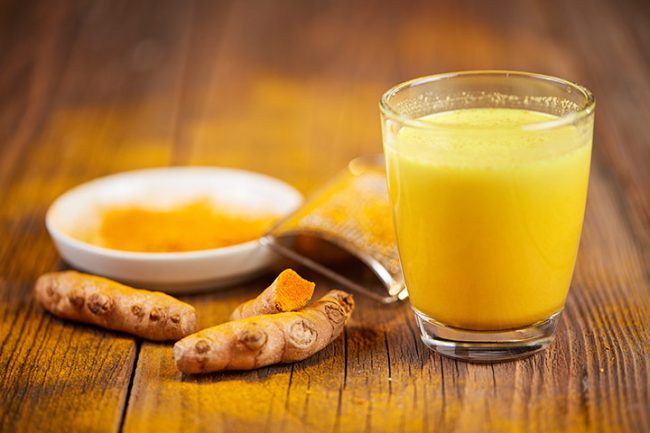
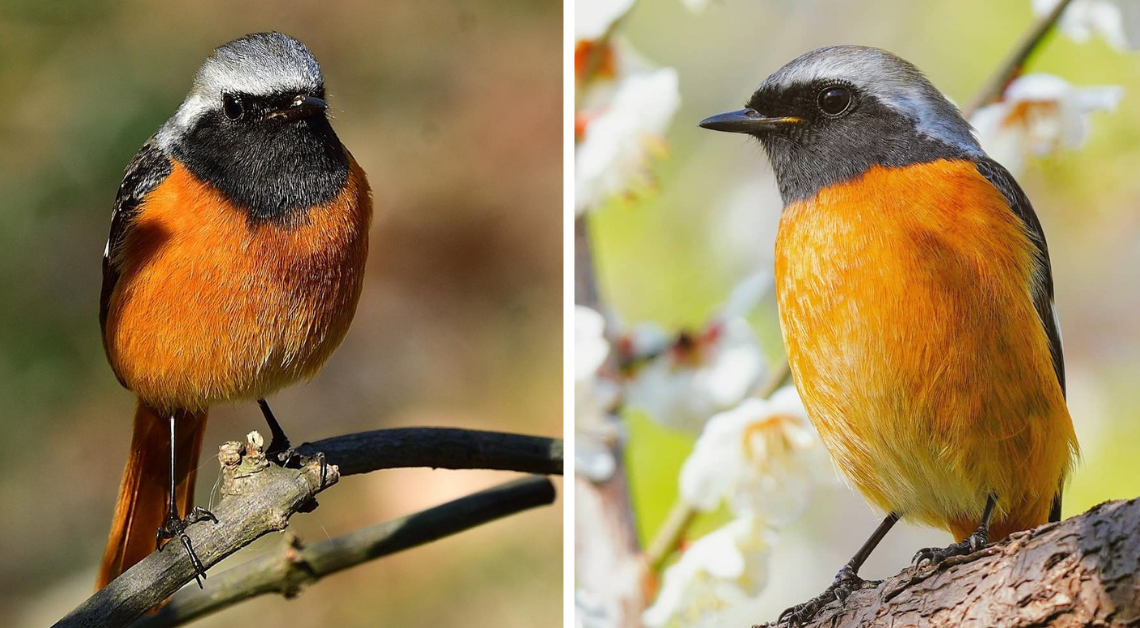




 Very little is known about these birds during the breeding season other than it is during the summer months in open forested areas, scrubby vegetation in subalpine areas.
Very little is known about these birds during the breeding season other than it is during the summer months in open forested areas, scrubby vegetation in subalpine areas. 
 Widespread throughout their range this bird is not to be considered a threatened species by the
Widespread throughout their range this bird is not to be considered a threatened species by the
